1. Where is Vietnam on the World Map?

Vietnam is a country located on the eastern edge of the Indochina Peninsula, at the center of Southeast Asia. With an area of 331,212 km², Vietnam shares a land border of 4,639 km, including the Gulf of Thailand to the southwest, the Gulf of Tonkin and the East Sea to the east, China to the north, and Laos and Cambodia to the west. Shaped like an "S" on the map, Vietnam stretches about 1,650 km from north to south (as the crow flies) and is narrowest at Dong Hoi (Quang Binh), with a width of less than 50 km. The coastline extends 3,260 km, not including the islands. Vietnam's sovereign waters and jurisdiction cover an area of about 1,000,000 km² in the East Sea.
Thanks to its long coastline from north to south and its large area from east to west, Vietnam is considered a strategically important region in the eyes of the world's military. In the past, many fierce wars occurred, but the Vietnamese people fought for national independence and to protect the country's territorial integrity.
2. What is Vietnam famous for?

Vietanm Tourist Map. Artwork by: Stuart Holmes
Vietnam boasts about a dozen must-see destinations across its territory. The thousand-year-old ancient capital, Hanoi, majestic mountains, the famous Halong Bay, or inland Ninh Binh are unmissable in the North (the upper part of the country). In the Central region, one should not miss the ancient capital of Hue and the old port town of Hoi An.
In the South, there are also essential stops for every journey, including the Mekong Delta. Particularly, the bustling city of Ho Chi Minh (Saigon) and the white sandy beaches of Phu Quoc or Con Dao Islands. Therefore, if you want to explore Vietnam from north to south (or vice versa) while visiting the main destinations, you should plan to stay at least two or three weeks.
Since Vietnam borders Laos to the west and Cambodia to the southwest, you will easily have the opportunity to extend your journey to these two countries. From Northern Vietnam, you can travel by land to Luang Prabang, the ancient capital of Laos. Additionally, from the Southern Mekong Delta, you can travel upstream along the Mekong River to Phnom Penh, the capital of Cambodia, and then continue your journey to Siem Reap by road or air.
Overall, a comprehensive travel map of Vietnam will provide you with an essential tool for planning your journey, exploring the country’s borders, and its connections with neighboring countries Laos and Cambodia.
3. North Vietnam: Top 6 Places to Visit
Northern Vietnam is home to many famous tourist attractions with spectacular landscapes and delicious cuisine. With its fascinating history, majestic scenery, and seasonal changes, you could spend months exploring everything.
3.1. Hanoi
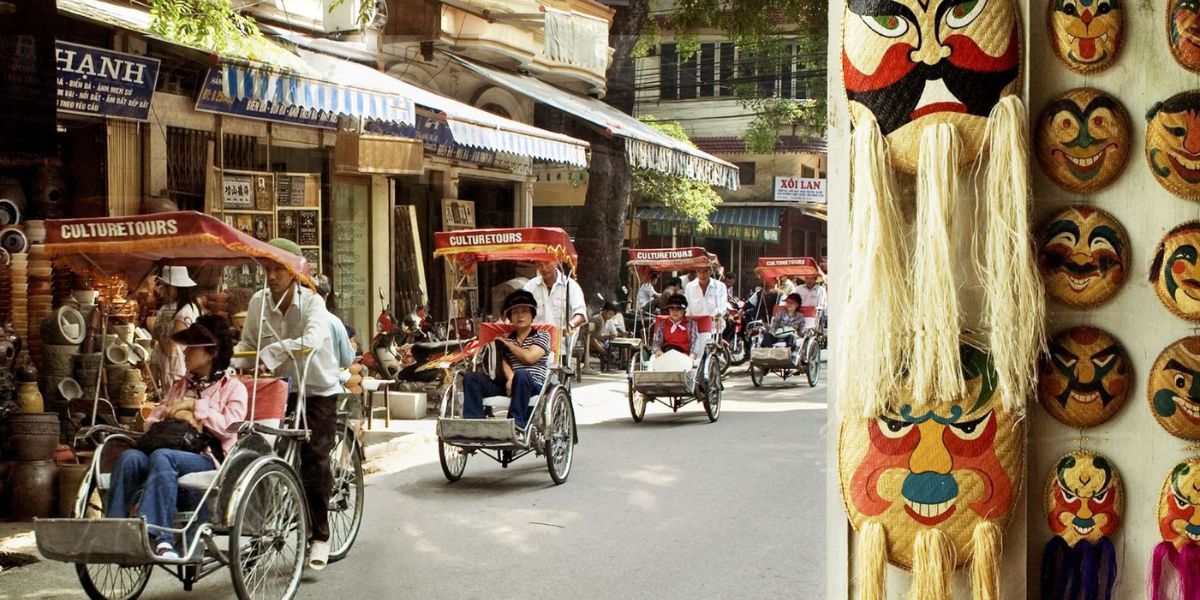
The capital of this country has much to offer, and it was named Asia’s Leading City Break Destination by the World Travel Awards in 2022.
Start your trip here to get a feel for the country’s culture and history. Begin by visiting key attractions, including the Temple of Literature, the Ho Chi Minh Mausoleum, and the Imperial Citadel of Thang Long.
Then, wander around the Old Quarter, with its charming shopping streets, French colonial architecture, souvenirs, and street food. Local dishes include bun cha (grilled pork with rice noodles)—the dish that former US President Barack Obama and the late chef Anthony Bourdain shared together on the travel show Parts Unknown. Walk around one of Hanoi’s 20 lakes to see how locals enjoy their leisure time. There’s a long history of traditional arts in and around Hanoi, so visit nearby craft villages if you’re interested.
3.2. Halong Bay

Recognized by UNESCO as a World Natural Heritage, Halong Bay is a tourist paradise in Northern Vietnam. It attracts a large number of visitors to explore the poetic beauty of natural landscapes such as Titop Island, Tuan Chau Island, and Bai Tu Long Bay. Titop Island, a small island in Halong Bay, is famous for its beautiful Titop Beach. Although not as large as other beaches, it boasts clear blue waters year-round.
While in Halong Bay, don’t miss the local specialties, a combination of fresh seafood and skillful preparation. Some suggested dishes include Banh Gat Gu—a rice roll with minced pork and fried shallots, Chao Ha—a nutritious porridge made with blood cockles, and Muc Xao—a dish made from minced or chopped squid.
3.3. Ninh Binh
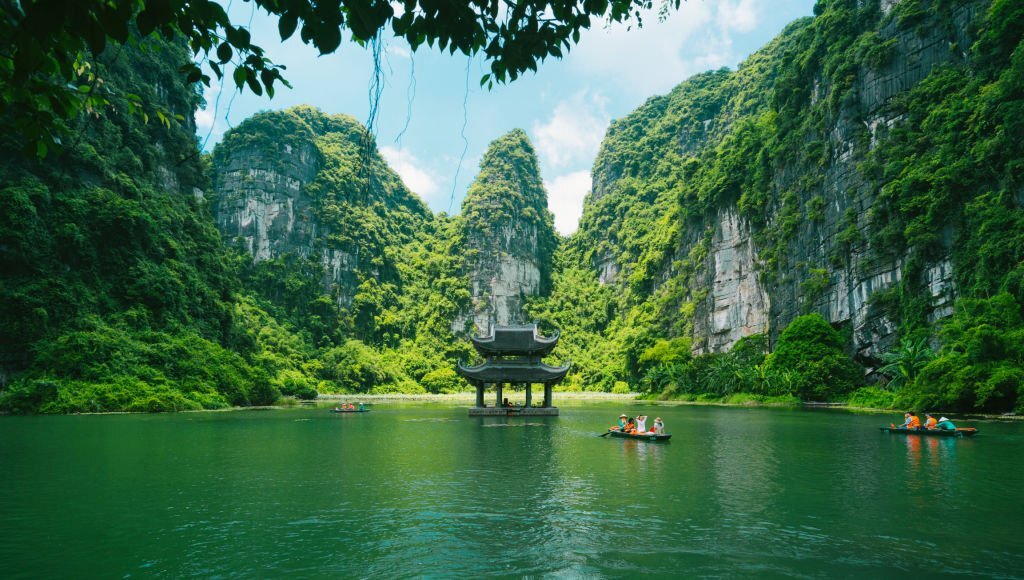
The Trang An - Bai Dinh - Hoa Lu - Tam Coc - Bich Dong scenic complex was recognized as a UNESCO Cultural and Natural Heritage Site in June 2014. Explore Tam Coc on a 1 hour and 40-minute bamboo boat ride along the Ngo Dong River, starting from Van Lam village, passing through a stunning landscape with rice fields, karst towers, and drifting through three natural caves. Ninh Binh is located at the southern end of Northern Vietnam, and you can find it on our Vietnam travel map.
Even more beautiful than Tam Coc is exploring Trang An on a 2-hour bamboo boat ride, rowed by local people, passing through 8 tunnel water caves with small temples and captivating scenery in between. This stunning landscape is also called the "Halong Bay on land." The boats are usually rowed by one or two local girls. This location was also featured in the famous movie Indochine.
3.4. Sapa
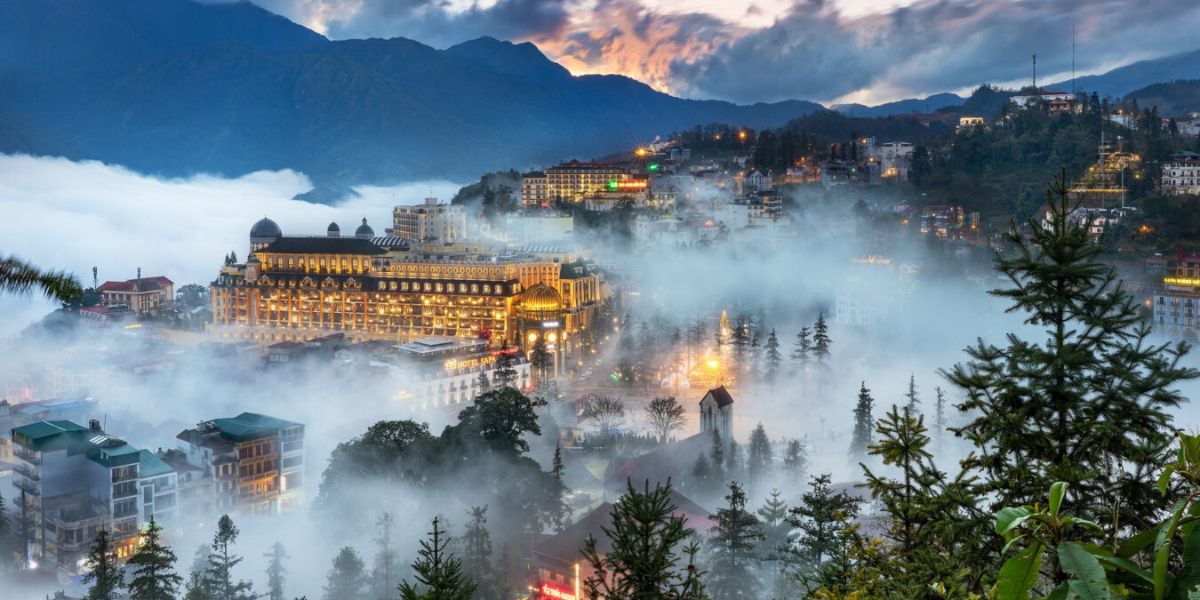
The mountain town of Sapa is famous for its diverse cultural population and its proximity to breathtaking scenery. Sapa itself is home to many ethnic minorities, including the H'mong, Dao, Muong, and Tay. The town also overlooks the majestic Muong Hoa Valley and spectacular terraced rice fields. If you want to dive deeper into the local residents and their culture, visit Sapa for an overnight trek or homestay. You can hike to more remote villages, spend the night, eat, and learn from the mountain inhabitants.
>> Check out this Sapa Travel Guide for more informations: The Ultimate Guide to Sapa
3.5. Ha Giang
.jpg)
To truly experience the rugged beauty of Vietnam's countryside, many say that traveling around Ha Giang is the ultimate experience. With winding roads and mountainous terrain, it’s best to take the trip on a motorbike over three to five days. Not a confident rider? Experienced drivers will take you on their bikes.
What everyone appreciates the most is the stunning views from lookout points and refreshment stops along the route, often between Ha Giang City and Du Gia. Highlights include Twin Hills, Lung Khuy Cave, Lung Tam Village, Ma Pi Leng Pass, and Tu San Canyon. For a market experience like no other, visit Meo Vac Market, held on Sundays. It’s a real village market bustling with locals and livestock.
3.6. Mai Chau
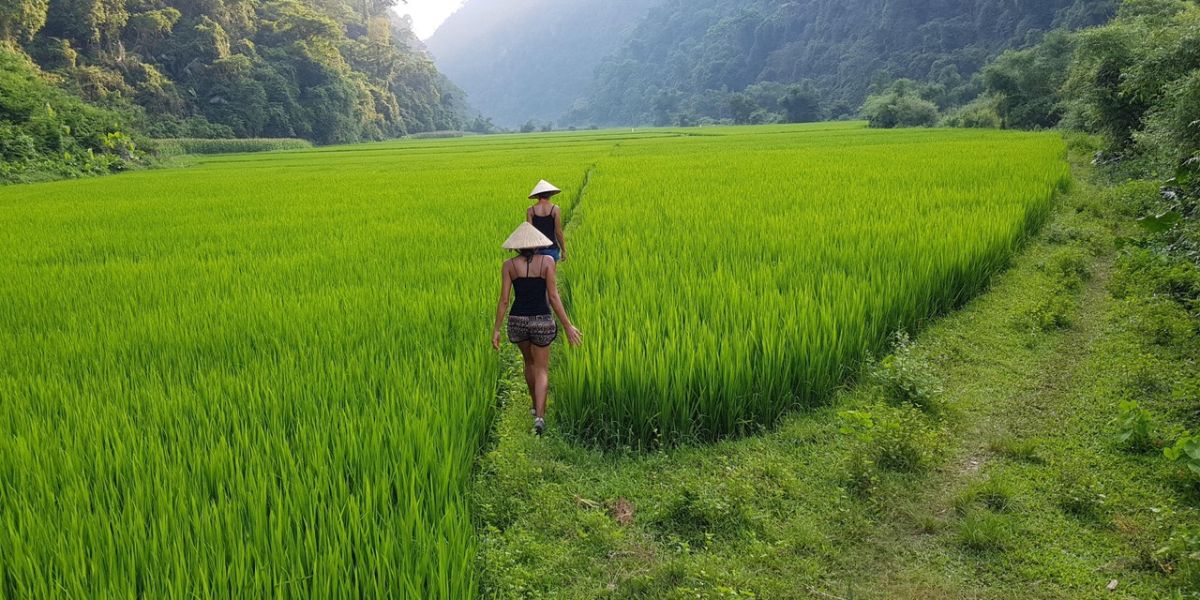
Located in the heart of Hoa Binh province, Mai Chau is a district with lush greenery, magnificent mountains, and a vibrant culture. Mai Chau is a great place to explore if you want a true glimpse into the many cultures that have found a home in Northern Vietnam. Mai Chau is a melting pot, home to seven distinct ethnic groups: H'mong, Dao, Muong, Hoa, Viet, White Thai, and Tay. Aside from its lush valleys, Mai Chau is also notable for its stilt houses. These homes are built three meters (10 feet) off the ground and often provide shelter for animals seeking refuge from harsh weather.
4. Central Vietnam: Famous Destinations
Central Vietnam is considered an island and beach paradise, where you can find diverse landscapes, ethnic culture, and culinary arts. The Central coast welcomes you with the promise of rich experiences and sunny days by the sea. Let's explore the most attractive places to gain basic knowledge about the local tourism potential before carefully planning your Central Vietnam trip.
4.1. Hue
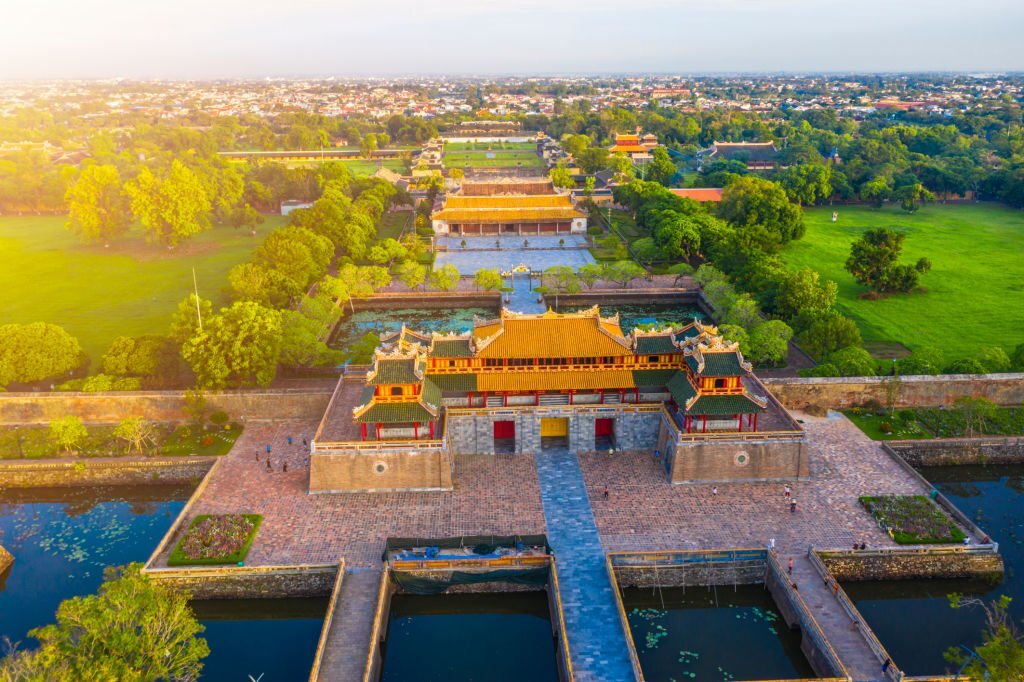
Hue is the capital of Thua Thien Hue province in the North Central Coast region of Vietnam, located near the center of the country. The original site was a Cham city called Kandarpapura and later Amarendrapura, and it was the capital of the Champa Kingdom from 192 to 605.
The streets in the city center are modern, with some luxurious buildings featuring prestigious hotels, shops, and restaurants. The center doesn’t offer much to see, except for the riverside area with souvenir shops and restaurants, but it’s a pleasant and quiet place to walk and dine after visiting the Citadel and Royal Tombs. It’s also worth noting that thanks to its royal past, Hue boasts one of the richest and most diverse cuisines in Vietnam, with many signature dishes that can only be tasted here. It’s fun to turn your vacation in Hue into a food tour to savor the delicious flavors of Vietnam.
4.2. Da Nang
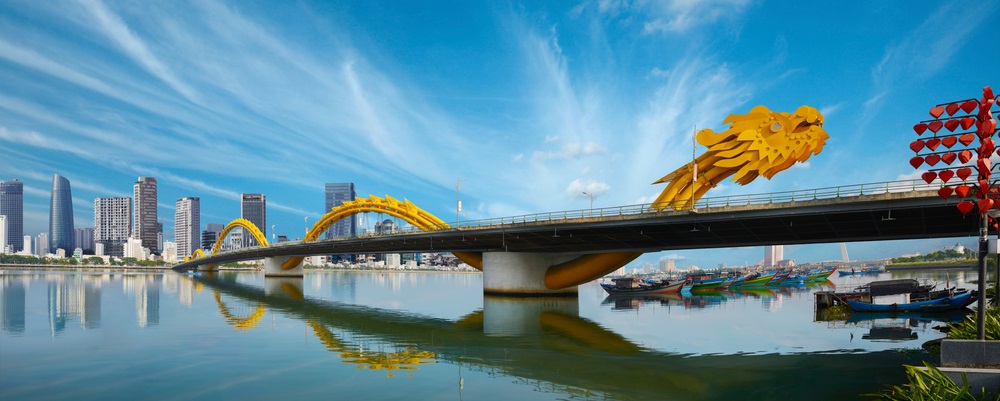
Known as the "livable city," Da Nang is one of the most charming cities in Central Vietnam, with a coastline stretching 60 kilometers. Nature has gifted the city many beautiful landscapes, including dozens of beaches that attract tourists year-round, such as Non Nuoc Beach, My Khe Beach, Nam O Beach, and Bac My An Beach. The Marble Mountains and Hai Van Pass are other must-see attractions in the city.
Da Nang’s cuisine is another magnet for visitors. You should try delicious dishes such as sliced pork wrapped in rice paper dipped in local fish sauce, rice vermicelli with pork and fish sauce, fried fish cake noodles, and durian sweet soup to understand the talent and creativity of the locals.
4.3. Hoi An
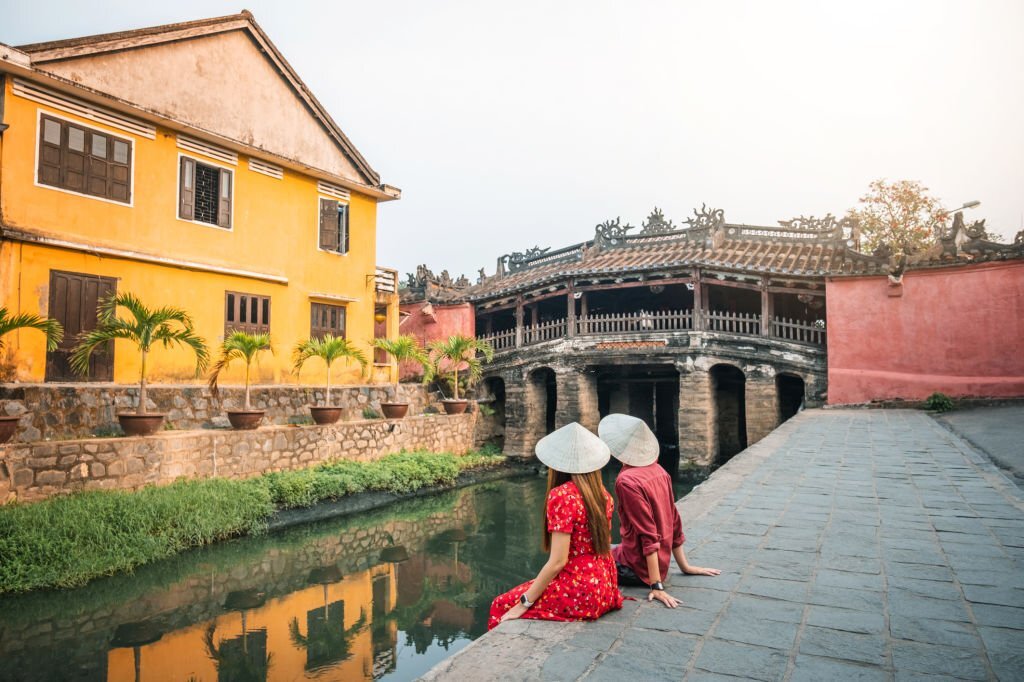
A UNESCO Cultural Heritage Site, this ancient town on the central coast is a well-preserved example of an important Southeast Asian trading port from the 15th to the 19th century. Today, Hoi An is also an international cultural crossroads, one of the country’s wealthiest towns, a culinary mecca, and one of the most important tourist centers in Vietnam.
On the 14th day of every lunar month, the town becomes even more magical with traditional-colored lanterns lighting up the streets. Popular attractions include the Japanese Covered Bridge, old merchant houses, and Quan Cong Temple. Let the town’s skilled tailors create custom-made outfits for you. Things to do in Hoi An. Hue – Da Nang – Hoi An are located in Central Vietnam, and you can find them on our Vietnam travel map.
5. Southern Vietnam Map
Stretching from the sleepy Mekong Delta to Ho Chi Minh City and the hills north of Hue, southern Vietnam encompasses more than a simple category. But as you wander through this region, you’ll find a few common threads: excellent street food, global architecture, and easy access to nature. Most visitors will arrive in the modern Ho Chi Minh City, also known as Saigon, and find adventure from there, traveling to truly ancient towns, beautiful beaches, former French hideaways, tranquil riverside villages, and more.
5.1. Ho Chi Minh City (Saigon)
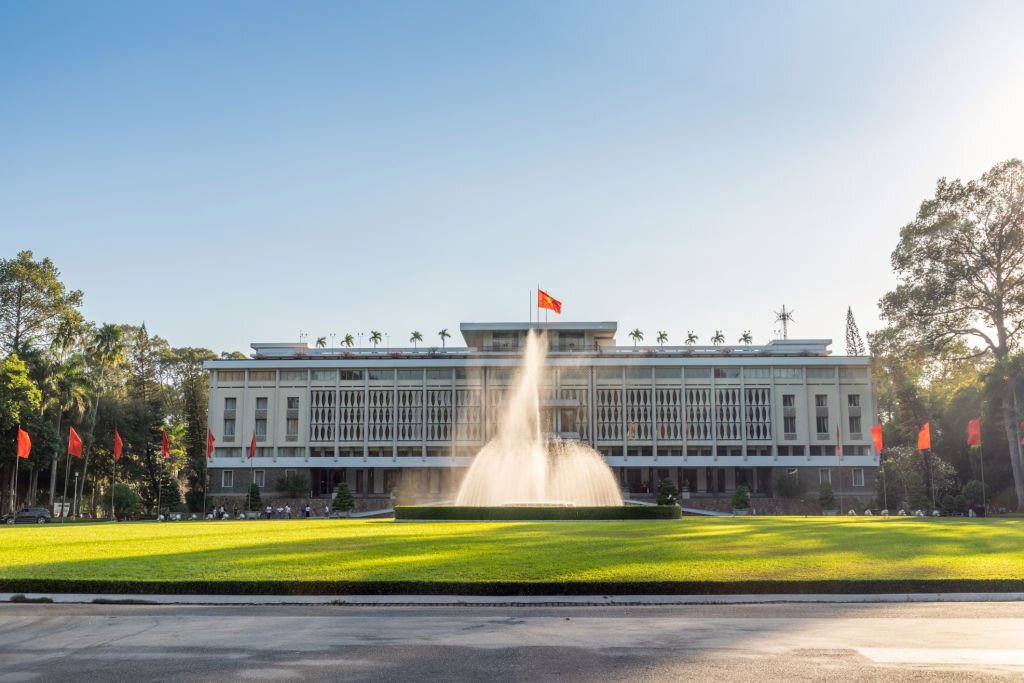
Ho Chi Minh City, vibrant and bustling, is the most populous and visited city in Vietnam. The blend of history and heritage with modern urbanization makes it easy to get lost in the fast pace and overwhelmed by the surroundings.
It takes a special kind of courage to cross the street for the first time, but the city still beckons, inviting you to explore.
Ho Chi Minh City was formerly known as Saigon, and the further south you travel in Vietnam, the more you will hear it called that way. It was the capital of South Vietnam and the seat of government until the end of the Vietnam War.
5.2. Mekong Delta

Delve deeper into the countryside on a boat, gliding through smaller canals for a great experience of how locals get around. Exploration becomes more interesting when you see traditional houses made of palm leaves and wood. Here, you have the opportunity to interact with local farmers and observe their fishing methods... The owners of these boats practice an ancient trading method—a wonderful experience of life on the water.
6. Vietnam Climate in 3 Regions
6.1. Northern Vietnam
Northern Vietnam includes three subregions: the Northwest, Northeast, and Red River Delta, comprising 25 provinces. The diverse terrain includes mountains, plains, coastlines, and continental shelves. The Northwest and Northeast regions are mainly mountainous, while the vast plains lie within the Red River Basin. Northern Vietnam has a humid subtropical climate with two distinct seasons: hot and humid summer from April to October and cool, dry winter from November to March, occasionally with drizzle.
6.2. Central Vietnam
Central Vietnam is divided into three subregions: North Central Coast, South Central Coast, and the Central Highlands, covering 19 provinces. The terrain is diverse, with mountains to the west and a narrow coastal plain to the east. The climate varies between the North Central Coast and South Central Coast, with the latter being drier. A distinctive feature of Central Vietnam’s climate is that the rainy and dry seasons do not coincide with the rainy seasons in the North and South. Overall, Central Vietnam experiences less rainfall in summer and more in winter. The Central Highlands have a climate similar to Southern Vietnam.
6.3. Southern Vietnam
Southern Vietnam is divided into two subregions: Southeast and the Mekong Delta, including 19 provinces. The terrain is generally flat, mainly comprising alluvial plains formed by the Dong Nai and Mekong rivers. The Mekong Delta is a low-lying area, with some regions below sea level, prone to frequent flooding. Southern Vietnam has a tropical monsoon climate with two distinct seasons: the rainy season from May to November and the dry season from December to April, with high temperatures year-round, averaging around 27°C.
Source: Wikipedia